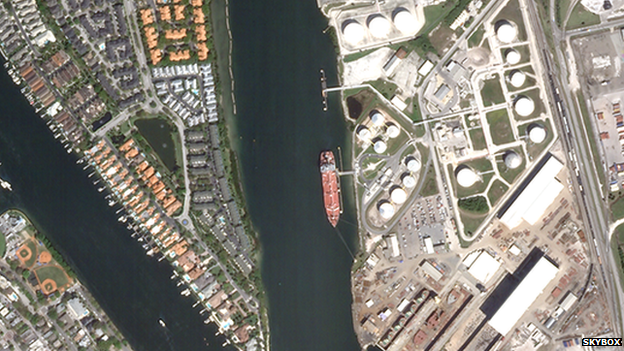The CubeSat revolution changing the way we see the world
- Published

What do Beanie Baby toys have to do with satellite technology?
There is a beloved story about the dimensions of the space shuttle.
Apparently the booster rockets had to fit through railway tunnels designed to accommodate a horse and cart. In short, the space shuttle boosters were the width of two horses' backsides.
A similar - and quite true - story can be told about the new poster child of the space industry, the CubeSat. Its dimensions were determined by the size of a Beanie Baby.
The cuddly toy was all the rage in 1999, when Stanford University professor Bob Twiggs was teaching his graduate students to design satellites.
Back then, satellites were big.
The Artemis telecommunications satellite launched in 2001 and weighed more than three tonnes. It was 8m tall and each of its two solar panels was as long as a bus.

With that much space and weight to play with, the temptation was to pack more and more gear into the satellite. However, that would have made it increasingly expensive - not to mention encouraging lazy thinking.
"If you've got lots of room to put everything in, you end up not being too careful with it," says Prof Twiggs. So he and his colleague decided that the students needed a constraint.
Prof Twiggs went to his local store, where he spotted a Beanie Baby toy neatly packed in its box. He went back to class, placed the box on the desk, and told his students: "Your satellite needs to be able to fit in this box."
And this educational challenge evolved into a practical standard for a whole new generation of tiny satellites.


50 Things That Made the Modern Economy highlights the inventions, ideas and innovations that helped create the economic world.
It is broadcast on the BBC World Service. You can find more information about the programme's sources and listen to all the episodes online or subscribe to the programme podcast.

CubeSat is a slight misnomer: the unit actually measures 10cm by 10cm by 11.35cm. CubeSats can be several units big, but are still about the size of a shoebox, and weigh kilograms rather than tonnes.
One planned CubeSat, the Lunar Flashlight,, external aims to orbit the moon, reflecting sunlight into deep craters and analysing the light that bounces back.
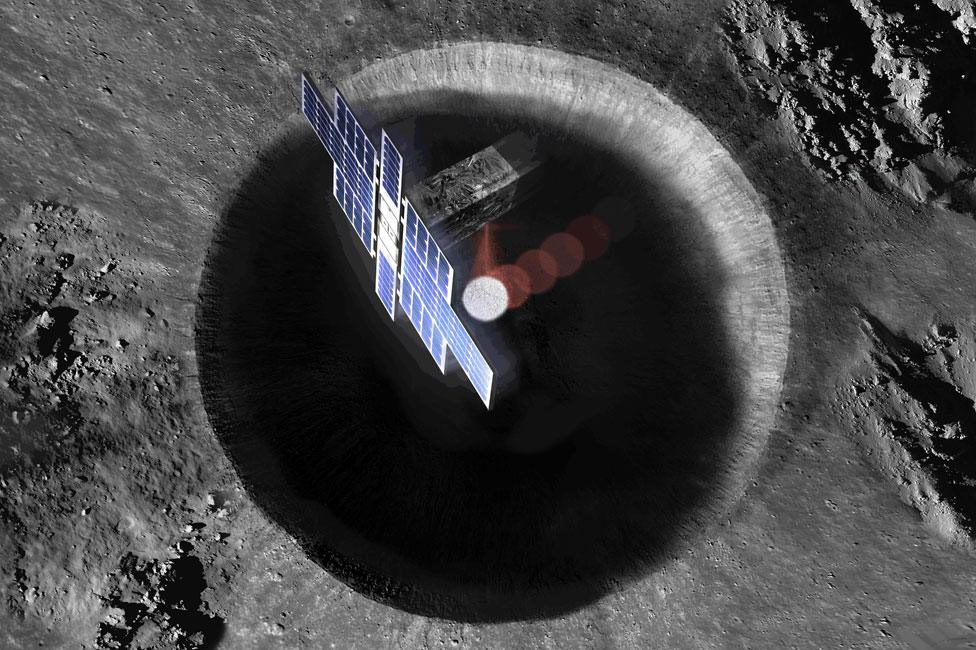
The Lunar Flashlight is a six-unit CubeSat which will search for ice on the Moon's surface
The Near-Earth Asteroid Scout project, external will collect data from asteroids and send its findings back to earth.
But for now, most CubeSats are designed to take images of our planet from above. The basic ingredients: a smartphone processor, solar panels, a camera, and some batteries.
CubeSats are cheap to make and cheap to launch. Traditionally, the entire process from start to launch of a major satellite might cost $500m (£394m). You could get a CubeSat into low earth orbit for closer to $100,000.
Big rockets such as the European Space Agency's Ariane 5, or Russia's Soyuz-2, are about 50m tall.
But CubeSats and other tiny satellites can ride on much smaller private sector rockets, like the 18m-tall Electron rocket launched from Rocket Lab's New Zealand base.
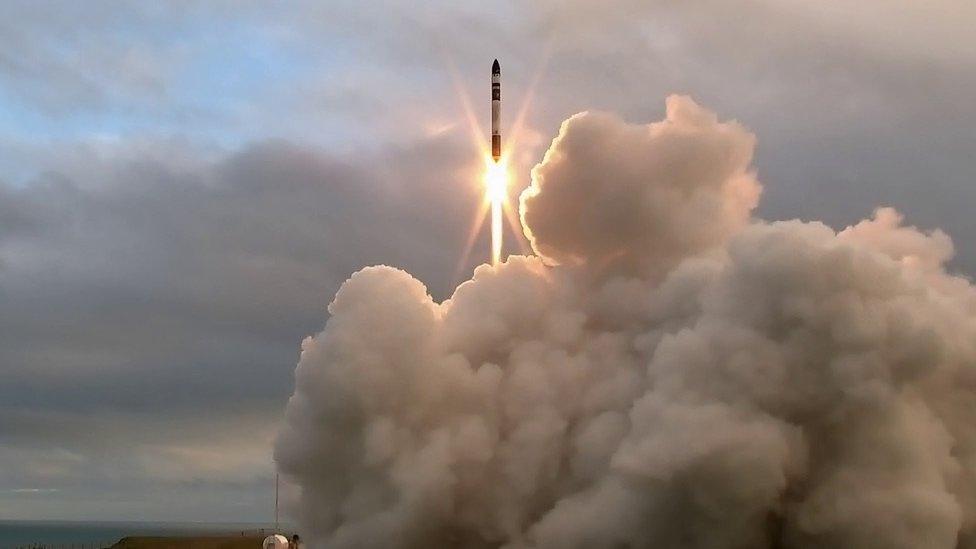
Rocket Lab has had five successful launches from New Zealand
CubeSats can also piggyback on a large satellite launch.
Early in 2017, India's official space agency, ISRO, launched 104 satellites in a single launch - a world record. Three of the satellites were large, but the rest were tiny, including 88 CubeSats owned by a new Silicon Valley company, Planet.
Planet was founded in 2010 and has the world's largest private fleet of satellites - more than 140 of them. They take more than a million photographs a day - covering anywhere on the globe, once every 24 hours.
They can't match the sophisticated imaging of a large satellite. However, they do provide better coverage, by taking more photographs of more places within any given time frame.
And Planet's 140 satellites may be the vanguard of something much bigger. Both SpaceX and Amazon have announced plans to launch thousands of satellites in low-earth orbit.
CubeSats have three lessons to teach us about the modern economy.
The first is why cheap, standardised modular parts are so important. While we reserve our attention and our plaudits for unique and complex projects, being cheap changes everything.
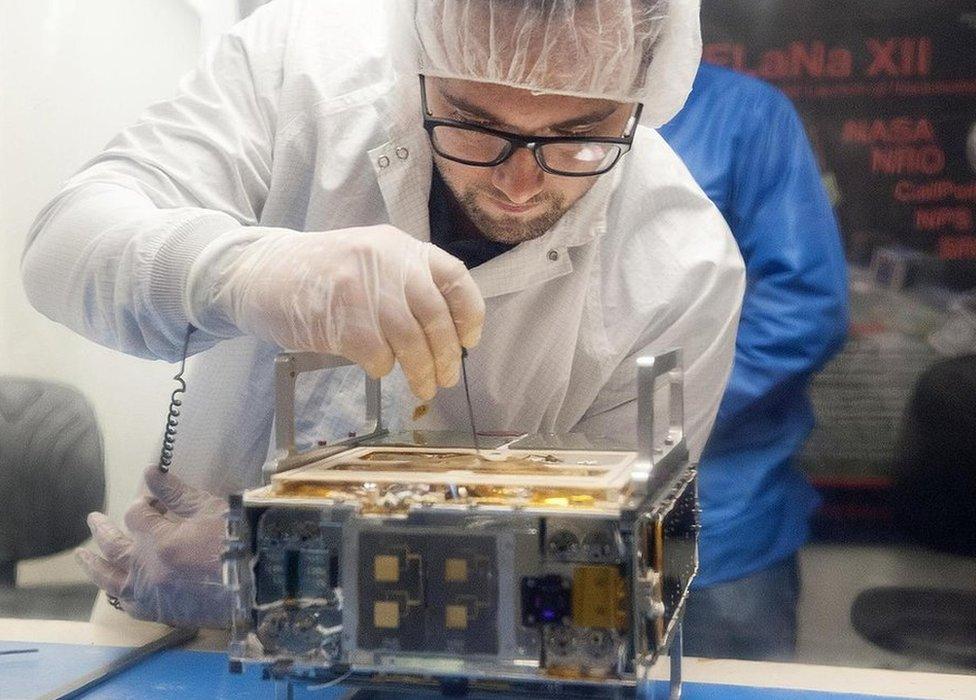
Second, CubeSat pioneers have embraced the fail-fast model of Silicon Valley.
Nasa, as a public agency, has a very low tolerance for risk. But an expendable CubeSat allows a different approach: if you're launching dozens at a time, you can lose one or two here and there. While Nasa has traditionally focused on ensuring that expensive kit works perfectly, the CubeSat model says don't worry.
Failing with disposable satellites is cheaper than succeeding with big ones. If it doesn't work, try again.
But third, don't dismiss the public sector too casually. It is easy to define private space exploration in contrast with Nasa and other national space agencies.

In fact Nasa has quietly supported CubeSats, external - by funding small CubeSat-launching rockets. It has also given CubeSats free rides to the International Space Station, where they can be launched through a special airlock.
CubeSats may soon be teaching us something entirely new about the way the economy works.
The great economist Alfred Marshall died in 1924. He called economics the study of humanity "in the ordinary business of life".
CubeSats allow us to observe the ordinary business of life as it unfolds, all around the world, day by day, and in some detail.
Economic forecasters have not been slow to notice this possibility.

More Things That Made the Modern Economy:

Lots of people would love to know if oil prices will go up or down, whether there is a glut in the wheat market, or a shortage of high-quality coffee.
It does not take much imagination to see how daily images of crops would give you an edge.
With the right analysis, and the right photographs, you may also be able to spot trucks on the road or count oil storage tanks.
Maybe you could even estimate how much electricity a power plant is generating by looking at the plumes of smoke.
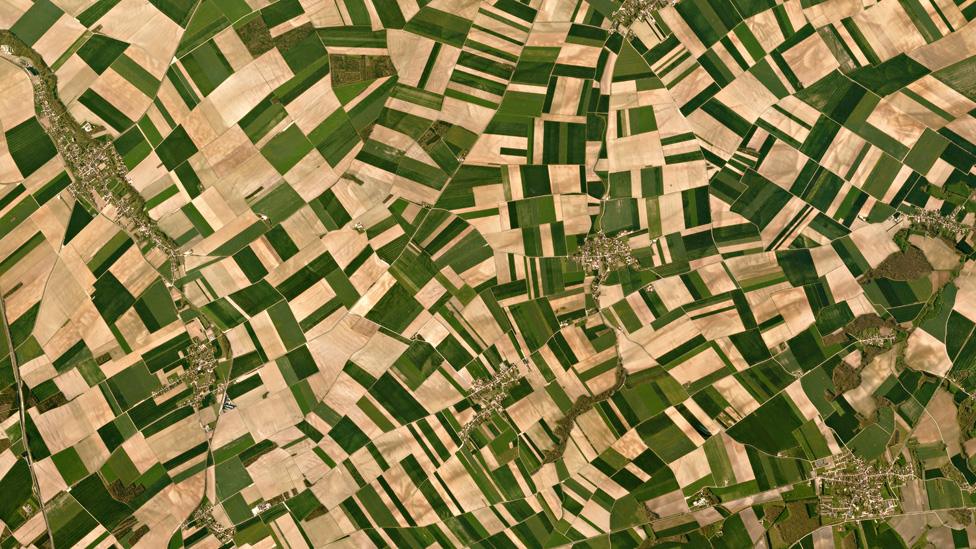
Fields outside Troyes in central France, captured by one of Planet's CubeSats on 10 April, 2016
But beyond this, satellites promise to show up hidden connections in the workings of the world's economy.
Algorithms are starting to extract subtle information at scale: how many of those houses in a Kenyan village have metal roofs? Which roads in Cameroon are in good condition - and has foreign aid money made any difference?
There is so much going on under the surface of a big economy. So much of it does not show up in regular statistical releases for months - sometimes years. Now we can see it day by day.
As the old story about the space shuttle and the horse's backside reminds us, some things in our economy change slowly.
But a lot of the modern economy moves very quickly indeed. No wonder some people are keen to take snapshots.
The author writes the Financial Times's Undercover Economist column. 50 Things That Made the Modern Economy is broadcast on the BBC World Service. You can find more information about the programme's sources and listen to all the episodes online or subscribe to the programme podcast.
- Published20 April 2019

- Published1 April 2019
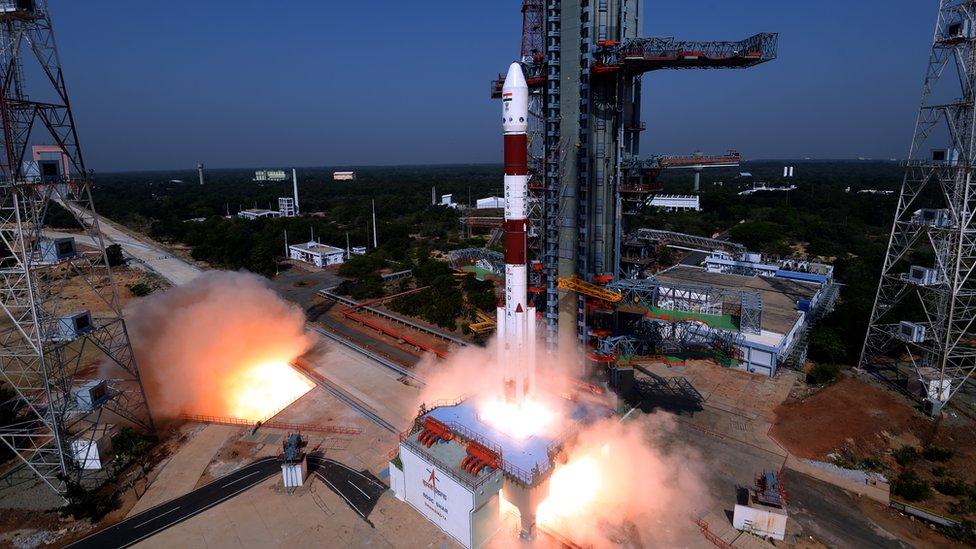
- Published20 June 2018
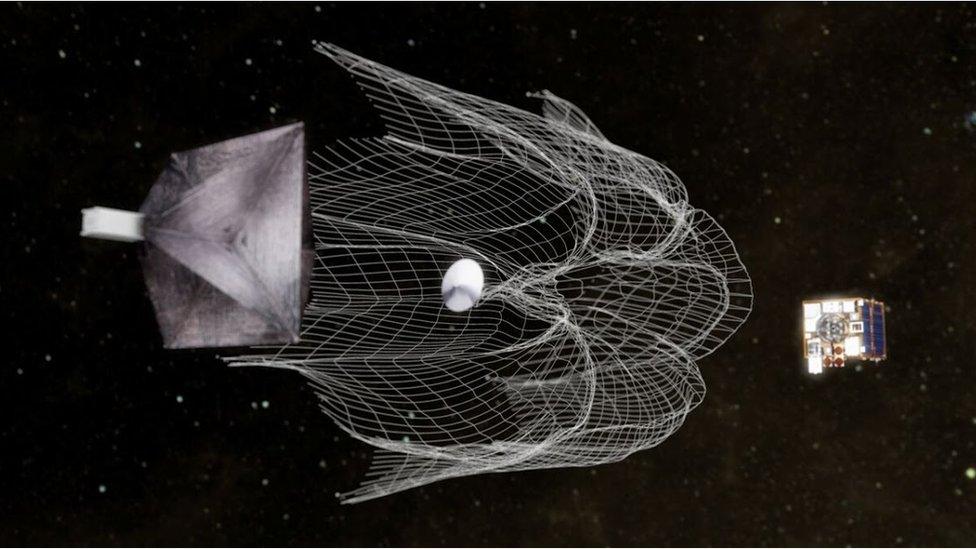
- Published25 May 2017
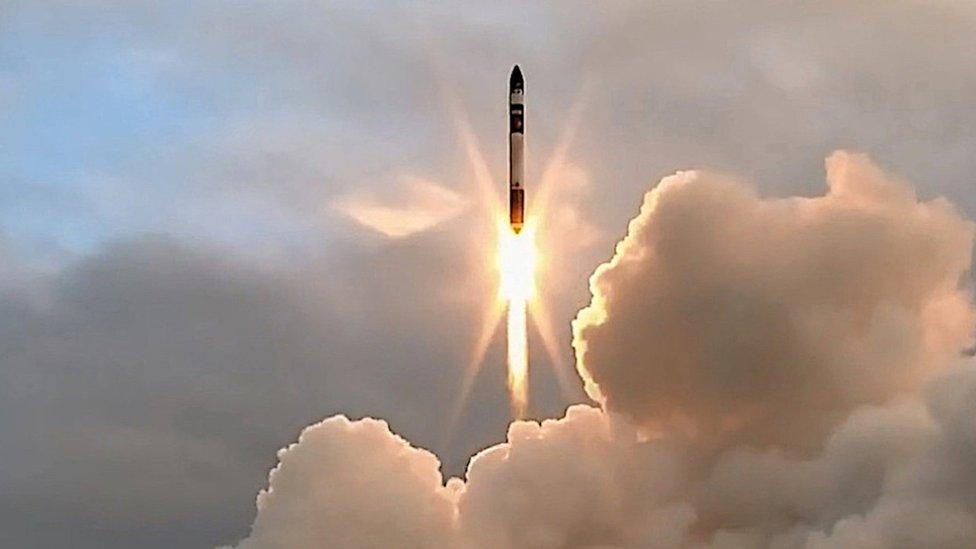
- Published22 March 2017
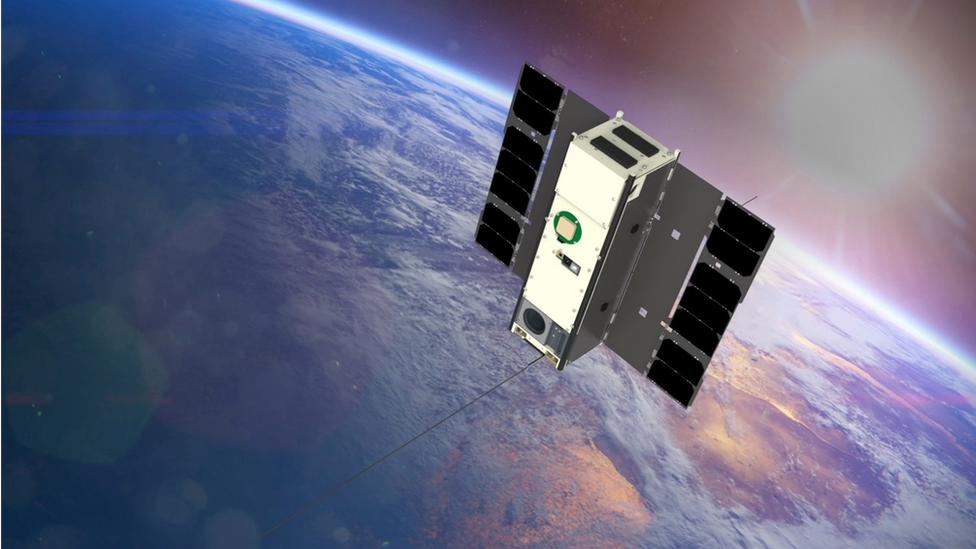
- Published16 May 2014
